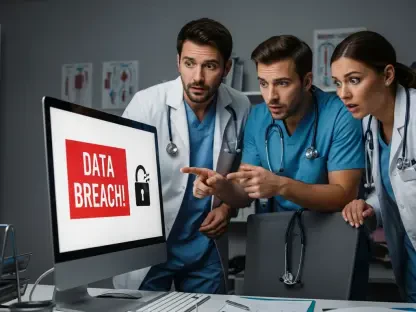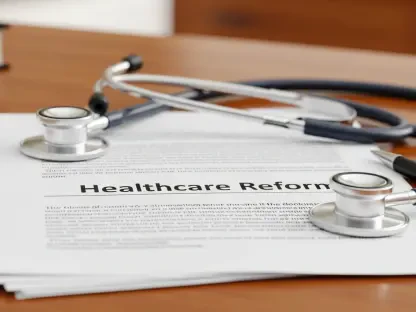As Open Enrollment kicks off on Healthcare.gov, millions of Americans are navigating a pivotal moment for their health insurance. This year’s sign-up period is unlike any other, with expiring subsidies, potential premium hikes, and a federal government shutdown adding layers of uncertainty. To shed light on these critical issues, we’re speaking with Faisal Zain, a renowned healthcare expert with deep expertise in medical technology and a keen understanding of health policy dynamics. With his extensive background in the healthcare sector, Faisal offers invaluable insights into how these changes impact individuals and the broader system. In our conversation, we explore the essentials of the marketplace, the significance of enhanced subsidies, the challenges faced by enrollment assistance programs, and the political landscape shaping the future of affordable coverage.
Can you walk us through what Open Enrollment on Healthcare.gov means for Americans and who typically relies on this platform for their health insurance?
Absolutely, Laura. Open Enrollment on Healthcare.gov is the annual period when individuals can sign up for or renew their health insurance plans through the Affordable Care Act marketplace. It’s a lifeline for people who don’t get coverage through an employer or public programs like Medicare or Medicaid. Think of it as a one-stop shop where you can compare plans, check eligibility for subsidies, and secure coverage. Typically, it serves a diverse group—small business owners, freelancers, farmers, and others who need affordable options. For many, it’s the only way to access comprehensive health insurance without breaking the bank.
What makes this year’s Open Enrollment period stand out compared to previous years?
This year is unique due to a perfect storm of factors. The biggest issue is the expiration of enhanced subsidies that were introduced in 2021 to make plans more affordable. These subsidies have been crucial for millions, and without a congressional deal, premiums could skyrocket. On top of that, we’re in the middle of a federal government shutdown, which has made these subsidies a hot-button issue in political negotiations. It’s created a lot of uncertainty for enrollees who are trying to plan their budgets and healthcare needs for the coming year.
Let’s dive deeper into these enhanced subsidies. Can you explain what they are and why they’ve been so critical for so many people?
Sure. Enhanced subsidies are extra financial assistance provided by the federal government to lower the cost of health insurance premiums for people buying plans on Healthcare.gov. They were first rolled out as part of a relief package in 2021 to help during the economic fallout of the pandemic. These subsidies expanded eligibility and increased the amount of aid, making coverage affordable for a broader range of incomes. Over 24 million people have benefited in recent years, and without them, many could see their premiums double or more. They’ve been a game-changer in keeping healthcare accessible for working families and individuals.
Speaking of premiums, how significant are the potential increases people might face if these subsidies aren’t extended?
The potential increases are substantial. On average, people could see their premiums double for the same plan in 2026 if the enhanced subsidies expire. However, the exact hike varies based on factors like location, age, and income. Even with baseline subsidies still in place, the loss of the enhanced aid means a much heavier financial burden for many. It’s a stark reminder of how policy decisions directly impact household budgets and access to care.
With these uncertainties, what’s your advice for individuals navigating Open Enrollment right now?
My advice is to be proactive and engaged. Don’t just let your plan auto-renew—log in, review your options, and check the new prices and benefits. Costs for 2026 could be dramatically different, and you might find a better deal by shopping around. Also, if possible, consider waiting a few weeks before finalizing your choice. There’s a chance lawmakers could strike a deal to extend the subsidies, which might change your options. Staying informed and flexible is key during this volatile period.
I’ve heard about challenges for organizations that help with enrollment. Can you share how funding cuts are affecting their ability to support people this year?
Absolutely. Organizations known as navigators, which guide people through the enrollment process, have faced severe funding cuts—some report a 90% reduction in federal grants. This has forced many to slash staff, sometimes going from a team of twelve to just one or two funded positions. They’re adapting by leaning on local foundations for support, revamping websites to offer self-service tools, and having administrative staff step in to assist directly. It’s a tough situation because their help is especially critical now, with so much confusion around premium changes.
On the political front, how likely do you think it is that Congress will reach a deal to extend these enhanced subsidies?
It’s hard to predict, but there’s a decent chance if both sides can come to the table. Democrats are advocating strongly to keep the subsidies, and many Republicans have expressed openness to a deal. The main hurdle is the timing and the broader political gridlock, especially with the shutdown. Negotiations are tricky, and partisan priorities often stall progress. Still, the widespread impact of potential premium hikes might push lawmakers to act before the situation worsens for millions of Americans.
Looking ahead, what is your forecast for the future of affordable health coverage in the U.S. given these ongoing challenges?
I think the future of affordable health coverage hinges on finding a sustainable balance between federal support and market dynamics. If subsidies aren’t extended or replaced with a viable alternative, we’ll likely see a drop in enrollment and more uninsured Americans, which could strain the healthcare system overall. On the flip side, the heightened attention to Open Enrollment this year might drive more innovation in how plans are structured or how assistance is delivered. I’m cautiously optimistic that political pressure and public demand will lead to some form of compromise, but it’s going to require creative policymaking and a real commitment to prioritizing access over partisanship.









